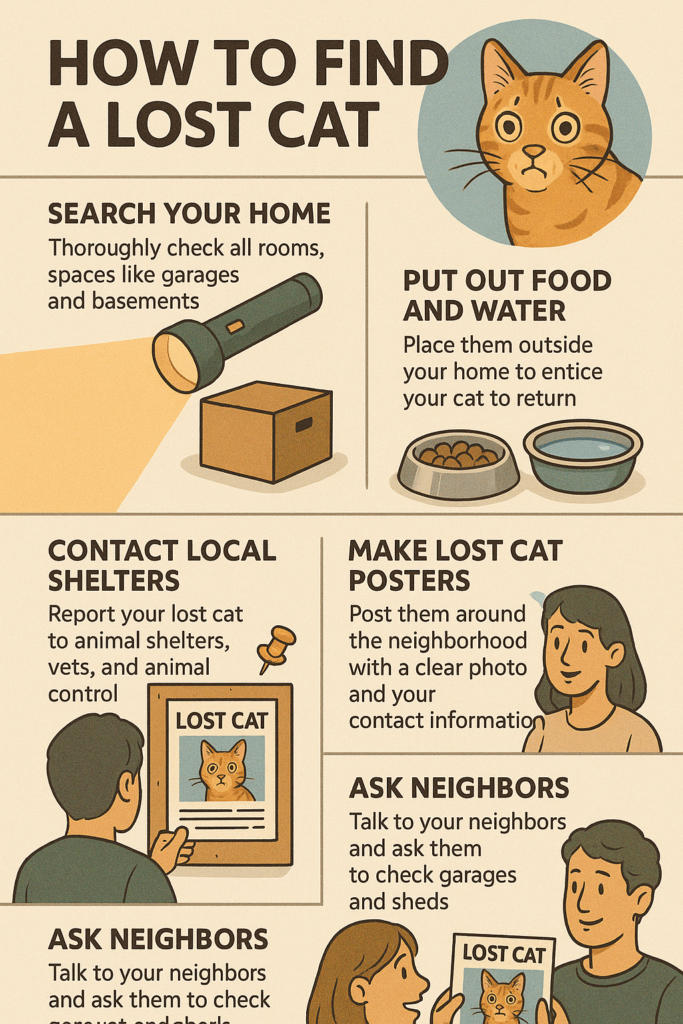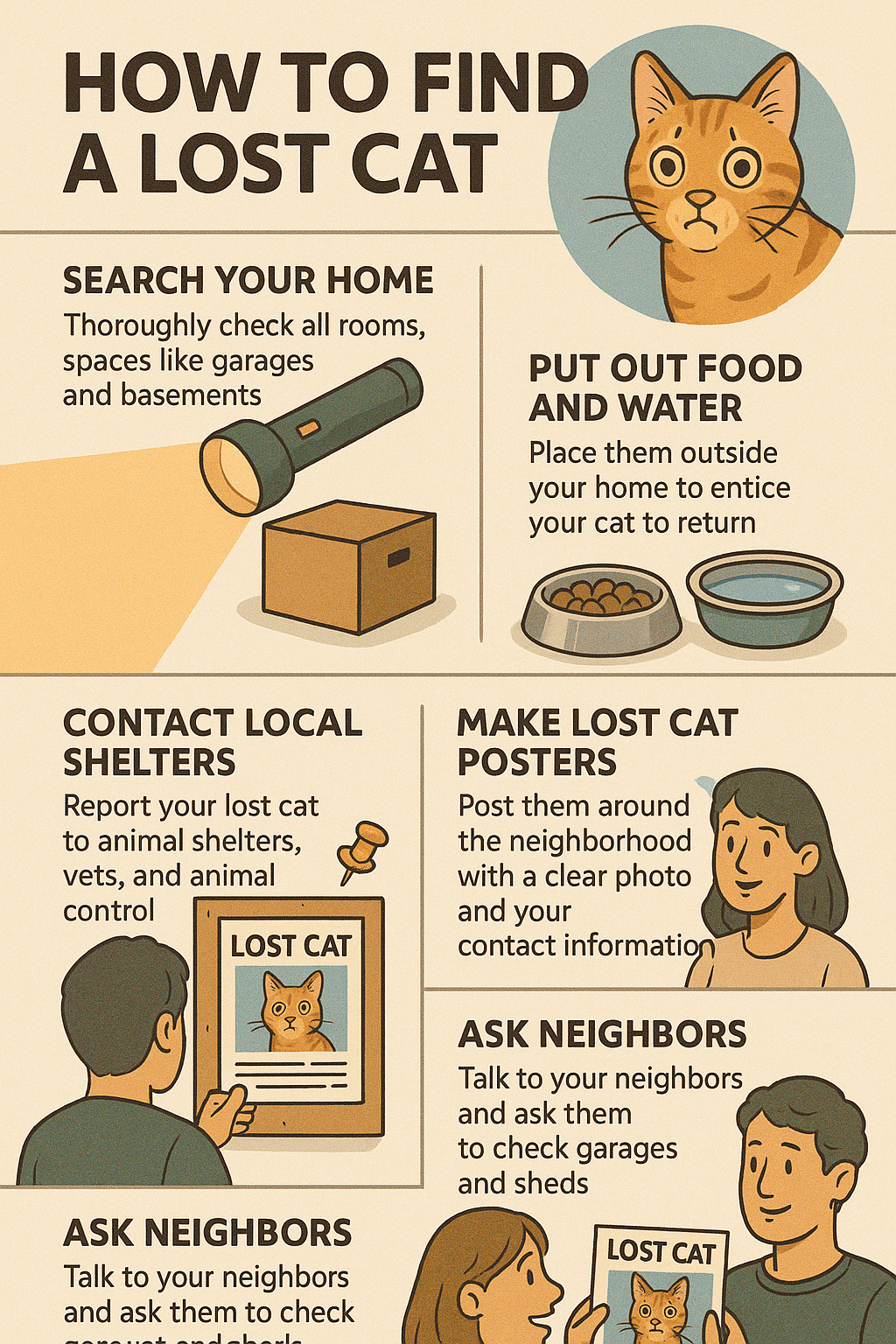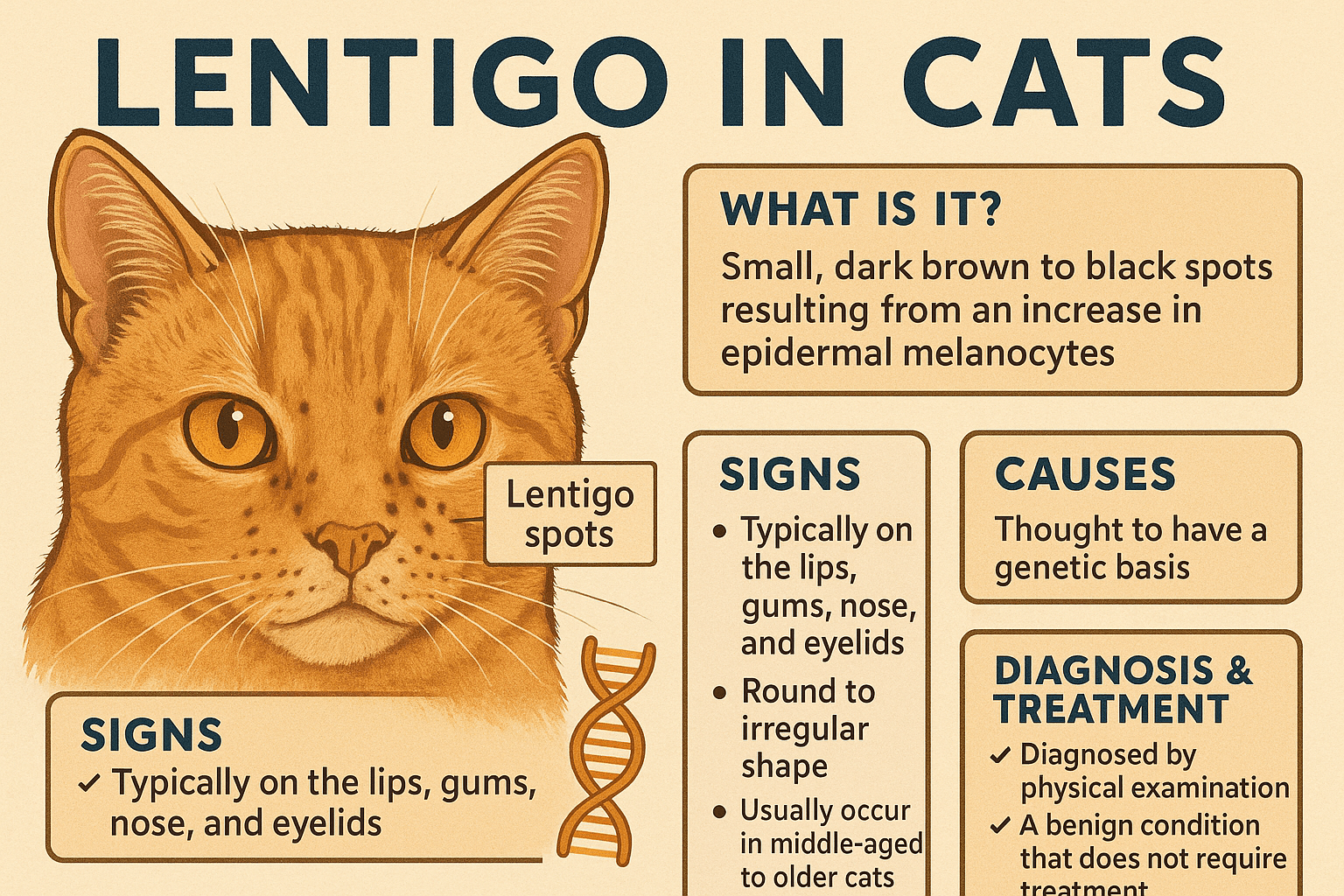How to Find a Lost Cat
Losing a beloved cat can be an emotionally overwhelming experience, but staying calm and taking immediate action is key to increasing the chances of a safe reunion. Cats are naturally curious creatures, and while some may wander farther than others, most lost cats stay relatively close to home. Understanding their behavior and knowing how to respond effectively can make all the difference in bringing your furry friend back safely. This guide provides expert tips and actionable steps to help you navigate this challenging situation and reunite with your missing companion.
Immediate Steps to Take When Your Cat Goes Missing
Time is of the essence when searching for a lost cat. Taking swift and strategic actions can significantly improve your chances of finding them quickly. Here’s what you should do first.
Search Your Home Thoroughly:
Check every room, closet, under furniture, and even appliances like washing machines or dryers where cats might hide.Call Out Loudly:
Use familiar sounds or phrases your cat associates with food or affection. Shake their treat bag or use a whistle they recognize.Ask Neighbors for Help:
Inform nearby neighbors and ask if they’ve seen your cat. Provide them with a recent photo and description.Leave Familiar Scents Outside:
Place items like their bed, blanket, or litter box near your front door to attract them back home.Create Flyers Quickly:
Design simple, eye-catching flyers with your cat’s photo, name, and contact information to distribute in your neighborhood.
Acting promptly and methodically increases the likelihood of locating your cat before they venture too far from home.

Understanding Lost Cat Behavior
Knowing how cats behave when they’re lost can help you narrow down your search strategy and focus on areas where they’re most likely to be found.
Indoor Cats Tend to Stay Close:
Indoor-only cats often remain within a few houses of their home, hiding in fear rather than wandering far.Outdoor Cats May Roam Farther:
Cats accustomed to going outside may explore larger territories, especially if spooked by loud noises or unfamiliar scents.Fearful Cats Hide Silently:
Many lost cats will find secluded spots—under decks, inside garages, or behind bushes—and stay quiet to avoid detection.Curious Cats Follow Scents:
Some cats may follow intriguing smells or sights, leading them into unfamiliar areas or neighboring neighborhoods.Injured Cats Seek Shelter:
If injured, a cat is more likely to hole up in a safe, hidden spot until they feel better or are discovered.
Understanding these behaviors allows you to tailor your search efforts to your cat’s unique habits and tendencies.
Check this guide 👉Cat Behavior After Being Lost: Best 7 Expert Tips!
Check this guide 👉How to Keep Your Cat Indoors Safely: Best 7 Expert Tips!
Check this guide 👉Can You Microchip a Cat? Best 7 Expert Tips!
Search Techniques | Preventive Measures |
|---|---|
Conduct a systematic neighborhood search | Microchip your cat for identification |
Distribute flyers with clear photos | Keep updated ID tags on their collar |
Use social media platforms to spread awareness | Secure doors, windows, and escape routes |
Set humane traps baited with food | Supervise outdoor time closely |
Leave familiar scents near your home | Create a safe outdoor space for them |
Utilizing Technology and Community Resources
Modern tools and community networks can amplify your search efforts and reach a wider audience. Leveraging these resources can greatly enhance your chances of success.
Post on Social Media Platforms:
Share posts on Facebook, Nextdoor, Instagram, and local community groups to alert neighbors and animal lovers in your area.Contact Local Shelters and Veterinarians:
Notify nearby shelters, rescue organizations, and vets about your missing cat. Provide them with photos and identifying details.Use GPS Trackers or Apps:
If your cat wears a GPS-enabled collar, track their location through the app. Otherwise, consider investing in one for future safety.Engage Online Lost Pet Databases:
Register your cat on websites dedicated to reuniting lost pets with their owners, such as PawBoost or LostMyDoggie.Set Up Humane Traps:
Place baited traps in areas where your cat was last seen, using tempting treats like tuna or wet food to lure them in.
Combining traditional methods with modern technology maximizes your ability to locate your missing cat efficiently.
Tips for Staying Calm and Persistent During the Search
Searching for a lost cat can be emotionally taxing, but maintaining composure and persistence is crucial throughout the process.
Take Breaks to Recharge:
Avoid burnout by stepping away periodically to rest and regain perspective.Keep a Journal of Efforts:
Document places you’ve searched, people you’ve contacted, and any sightings reported to stay organized.Enlist Friends and Family:
Ask loved ones to assist with flyer distribution, online sharing, or physically searching the area.Stay Positive and Hopeful:
Focus on stories of successful reunions to keep morale high during challenging times.Be Patient Yet Proactive:
Cats may take days or weeks to return home, so continue searching diligently without giving up hope.
A balanced approach ensures you remain both effective and emotionally resilient during the search.
Common Mistakes to Avoid
While searching for a lost cat, certain mistakes can hinder your progress. Being aware of these pitfalls helps ensure a more efficient and effective search.
Waiting Too Long to Act:
Delaying your search reduces the chances of finding your cat quickly. Begin immediately after realizing they’re missing.Overlooking Nearby Hiding Spots:
Cats often hide close to home. Don’t assume they’ve traveled far without thoroughly checking nearby areas.Relying Solely on Flyers:
While flyers are helpful, combining them with other methods like social media and physical searches yields better results.Ignoring Animal Shelters:
Failing to check shelters regularly means you might miss opportunities to reclaim your cat if they’re brought in.Giving Up Too Soon:
Cats can reappear unexpectedly after days or weeks. Maintain hope and continue searching consistently.
Avoiding these errors keeps your search efforts focused and productive.
Signs Your Cat Might Be Nearby
Even if you haven’t spotted your cat yet, subtle signs could indicate they’re still in the vicinity. Pay attention to these clues during your search.
Unusual Activity Around Food Sources:
Check if food left out disappears overnight, which could mean your cat is visiting undetected.Disturbed Dirt or Leaves:
Look for paw prints, disturbed soil, or flattened grass in secluded areas where cats might hide.Sounds of Meowing or Scratching:
Listen carefully at dawn or dusk when cats are most active; faint meows may signal their presence.Neighbor Sightings or Reports:
Ask neighbors if they’ve noticed strange cats lurking around their property recently.Scent Trails Left Behind:
Cats leave scent markers to navigate. Placing familiar-smelling items outdoors can draw them closer.
Noticing these signs can lead you directly to your missing cat.
Preventing Future Escapes
Once you’ve reunited with your cat, take steps to prevent future disappearances. These preventive measures protect your pet and give you peace of mind.
Install Secure Window Screens:
Ensure all windows have sturdy screens that can withstand scratching or jumping attempts.Supervise Outdoor Time:
Always monitor your cat during outdoor playtime or invest in a catio for controlled exploration.Update Microchip Information:
Regularly verify that your contact details linked to the microchip are accurate and up-to-date.Train Them to Come When Called:
Teach your cat to respond to specific commands or sounds using positive reinforcement techniques.Secure All Potential Exit Points:
Inspect your home for gaps, loose boards, or open vents that could serve as escape routes.
By implementing these safeguards, you minimize the risk of losing your cat again and ensure their continued safety.
Frequently Asked Questions About Finding a Lost Cat
How long does it typically take to find a lost cat?
The timeframe varies, but many cats are found within a week if active searching begins immediately.
What should I do if someone claims to have seen my cat?
Visit the location promptly, bring proof of ownership (like vet records), and thank the person for their help.
Is it worth looking at night?
Yes, cats are nocturnal and may emerge from hiding spots after dark. Bring a flashlight and call softly.
What if my cat has no microchip or ID tag?
Start searching immediately and notify local shelters. Consider registering them retroactively once they’re found.
Should I offer a reward for my missing cat?
Offering a small reward can motivate people to actively look for your cat, but be cautious of scams.
Never Give Up Hope in Finding Your Lost Cat
Finding a lost cat requires patience, persistence, and a combination of practical strategies and emotional resilience. By understanding feline behavior, utilizing available resources, and enlisting community support, you can maximize your chances of reuniting with your cherished pet. Remember, many lost cats are eventually found—sometimes months or even years later. Stay hopeful, remain diligent, and trust that your bond with your cat will guide them back to you. With determination and love, you’ll give your furry friend the best chance of coming home safely.
How to Find a Lost Cat: Best 7 Expert Tips! Discover actionable strategies to locate your missing cat, understand their behavior, and prevent future escapes with expert advice.
Is Dieffenbachia Toxic to Cats? Best 7 Expert Tips! Discover the dangers of Dieffenbachia, symptoms of poisoning, and how to keep your cat safe with expert advice and preventive measures.
Lentigo in Cats: Best 7 Expert Tips! Discover expert advice on understanding, identifying, and managing lentigo in cats to ensure your feline's health and happiness.
Siamese Cat Lifespan: Best 7 Expert Tips! Discover how to maximize your Siamese cat’s longevity with expert advice on health, care, and lifestyle for a happy, thriving feline companion.




